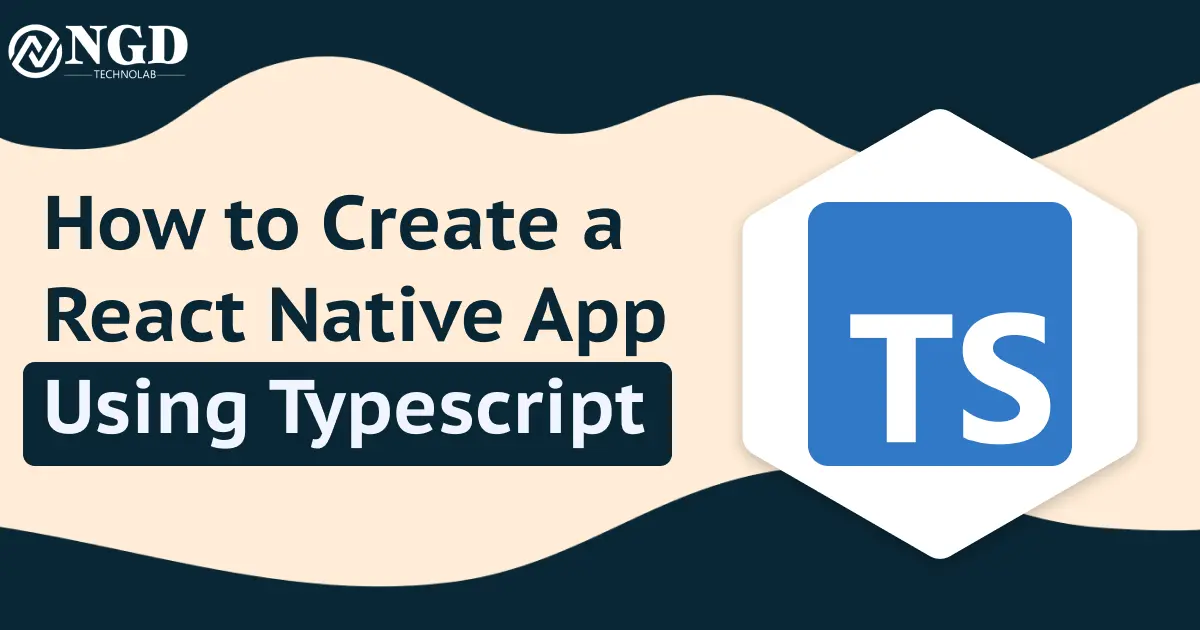How to Create a React Native App Using Typescript
-
 Prashant Padmani
Prashant Padmani

Get Free consultation and let us know about your custom web and Mobile App project idea

Over 14+ years of work experience, we have built 210+ web and mobile apps
We can help you with
- Dedicated Developer
- delivering high-quality development
- Custom Mobile App Development
- Innovative Solution For Startups and Enterprise
React Native has emerged as a powerful framework, enabling developers to create cross-platform applications with ease. This guide will walk you through the process of creating a React Native app using TypeScript. Whether you’re a seasoned developer or just getting started, this comprehensive tutorial will equip you with the knowledge and skills needed to embark on your TypeScript-powered React Native journey.
Basics of React Native
In this section, we’ll cover the fundamentals of React Native, exploring its benefits, and understanding why it has become a preferred choice for mobile app development. Synonyms like “cross-platform development” and “mobile application framework” will be seamlessly integrated to enhance clarity.
Introduction to TypeScript in Mobile App Development
As we delve into TypeScript, we’ll explore how the integration of strong typing enhances code quality and catches potential errors during development. Terms like “static typing” and “compile-time checking” will be introduced to illuminate the advantages of using TypeScript in React Native development.
Setting Up Your Development Environment
Setting up the development environment can be a critical step. Synonyms like “development tools” and “configuration process” will guide you through the necessary steps, ensuring a smooth setup for your React Native project with TypeScript.
Creating Your First React Native Project with TypeScript
This section will provide a step-by-step guide on initiating your React Native project with TypeScript. Phrases like “project initialization” and “code scaffolding” will be used to describe the practical aspects of setting up your first app.
Navigating the React Native Component Ecosystem
Understanding the React Native component ecosystem is vital for efficient development. Synonyms like “UI elements” and “component library” will be employed to elucidate how various components contribute to the visual structure of your app.
Styling and Theming with TypeScript
Exploring the styling and theming aspects of your React Native app using TypeScript will involve synonyms like “UI design” and “aesthetic customization.” This section will guide you in creating visually appealing and responsive user interfaces.
State Management in React Native Using TypeScript
State management is crucial for any dynamic application. Synonyms such as “application state” and “data flow management” will be used to illustrate how TypeScript enhances the handling of state in a React Native app.
Integrating APIs and Fetching Data
This section will cover the integration of APIs and fetching data, employing synonyms like “data retrieval” and “API integration” to explain how TypeScript simplifies the process of connecting your React Native app to external services.
Handling Navigation in a TypeScript React Native App
Navigating through a React Native app involves understanding routing and navigation. Synonyms like “app navigation” and “user flow” will be utilized to describe how TypeScript facilitates smooth navigation within your application.
Testing and Debugging Strategies
This section will explore testing and debugging strategies for your TypeScript-powered React Native app. Synonyms like “code testing” and “error detection” will be integrated to highlight the importance of reliable and bug-free code.
Optimizing Performance for React Native Apps
Optimizing performance is key for a successful React Native app. Terms like “app efficiency” and “performance enhancement” will be used to guide you through the process of ensuring your app runs smoothly.
Deployment and App Store Submission
This section will cover the steps to deploy your React Native app with TypeScript. Synonyms like “app release” and “submission process” will be employed to explain the journey from development to the app store.
Troubleshooting Common Issues in TypeScript React Native Development
Every development process comes with challenges. Synonyms like “problem-solving” and “error resolution” will be integrated to help you troubleshoot common issues that may arise during TypeScript React Native development.
Best Practices and Tips for Maintaining a TypeScript React Native Codebase
Maintaining a clean and efficient codebase is essential. Synonyms like “code hygiene” and “best coding practices” will be used to provide valuable tips for sustaining a well-maintained TypeScript React Native project.
Exploring Advanced Features and Libraries
This section will delve into advanced features and libraries available for TypeScript React Native development. Synonyms like “advanced functionalities” and “third-party libraries” will be introduced to encourage exploration beyond the basics.
Case Studies: Successful React Native Apps Built with TypeScript
Examining successful case studies will showcase the impact of React Native with TypeScript in real-world scenarios. Synonyms like “success stories” and “application achievements” will be used to demonstrate the potential of this powerful combination.
Conclusion
In conclusion, this guide has provided an in-depth understanding of creating a React Native app using TypeScript. Whether you’re a novice or an experienced developer, embracing TypeScript in your React Native projects opens the door to enhanced productivity, code reliability, and a streamlined development process.
Frequently Asked Questions
TypeScript brings strong typing, compile-time checking, and improved code quality to React Native, catching potential errors early in the development process.
The setup process involves configuring development tools and initializing your project, ensuring a smooth start to your React Native journey.
State management is crucial for dynamic apps, and TypeScript improves the handling of application state, providing efficient data flow management.
Yes, TypeScript simplifies the process of integrating APIs and fetching data, ensuring seamless connectivity between your app and external services.
Maintaining code hygiene and adhering to best coding practices are crucial for sustaining a well-maintained TypeScript React Native project.
Latest Blogs
Explore the Latest Blogs on Trends and Technology.





